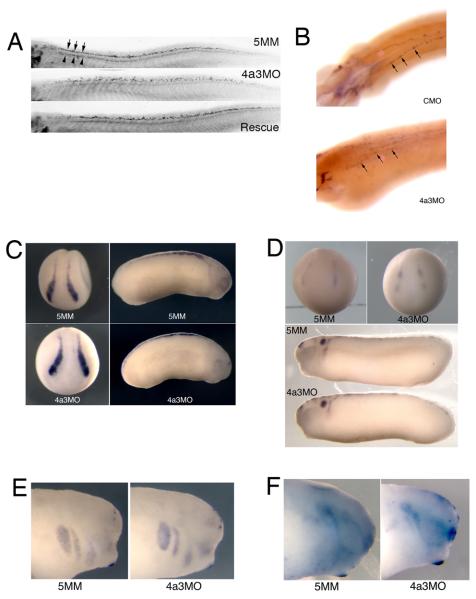Fig. 6.
Eif4a3 morphants display late defects in sensory neuron and neural crest development. A: Islet-1 antibody staining of Rohon-Beard (top band of nuclei in top panel, arrows) and motor (bottom band of nuclei in top panel, arrowheads) neurons. Increased dorsoventral spread of Islet-1 positive Rohon-Beard cells, as well as a reduction in intensity of Islet-1 staining in motor neuron nuclei, was observed in Eif4a3 morphants; both defects were partially rescued by co-injection of eif4a3 RNA. B: Whole-mount in situ hybridization with an antisense probe against hox11L2 in embryos injected with Eif4a3MO (4a3MO) or a control (scrambled) morpholino (CMO). Note disorganization of hox11L2-positive Rohon-Beard cells (arrows) in the Eif4a3 morphant embryo. C, D, E, F: Whole-mount in situ hybridization with antisense probes against slug/snail2 (C), sox10 (D), Xtwist (E), or Xsix-1 (F) in embryos injected with Eif4a3MO (4a3MO) or Eif4a3MM (5MM) morpholinos, as listed. No consistent differences were seen in the expression of these markers at neurula or tailbud stages.

